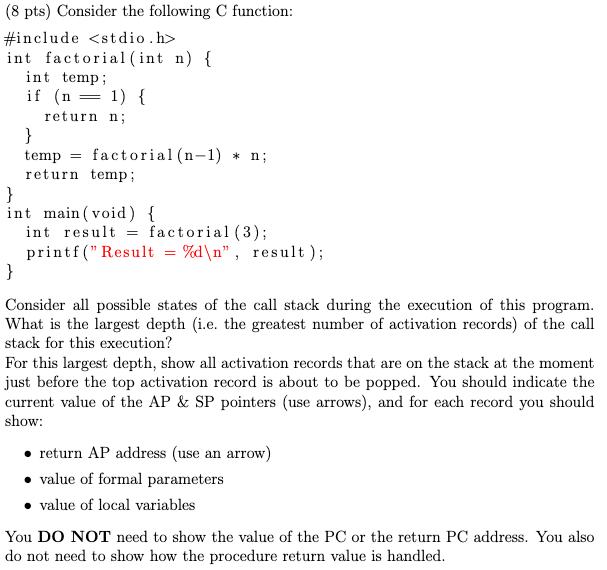Answered step by step
Verified Expert Solution
Question
1 Approved Answer
(8 pts) Consider the following C function: #include int factorial (int n) { int temp; } if (n=1) { } return n; temp factorial

(8 pts) Consider the following C function: #include int factorial (int n) { int temp; } if (n=1) { } return n; temp factorial (n-1) n; return temp; int main(void) { } = int result factorial (3); printf("Result = %d ", result); Consider all possible states of the call stack during the execution of this program. What is the largest depth (i.e. the greatest number of activation records) of the call stack for this execution? For this largest depth, show all activation records that are on the stack at the moment just before the top activation record is about to be popped. You should indicate the current value of the AP & SP pointers (use arrows), and for each record you should show: return AP address (use an arrow) value of formal parameters value of local variables You DO NOT need to show the value of the PC or the return PC address. You also do not need to show how the procedure return value is handled.
Step by Step Solution
There are 3 Steps involved in it
Step: 1

Get Instant Access to Expert-Tailored Solutions
See step-by-step solutions with expert insights and AI powered tools for academic success
Step: 2

Step: 3

Ace Your Homework with AI
Get the answers you need in no time with our AI-driven, step-by-step assistance
Get Started


